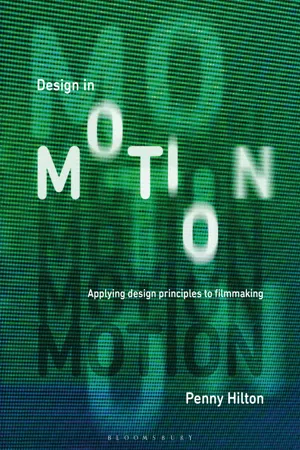![]()
Part 1
Setting It All Up
![]()
1
Foundations
Chapter Overview
This first chapter aims to give you a few pointers on how you can begin an idea. It puts some of the essential building blocks in place to ensure you can follow it through, from the initial concept for a new film, to setting up an efficient workflow system, including planning, research and organizing your time to keeping your development on track.
In this chapter, you will learn to do the following:
•Kick off an idea by looking at some ways to approach brainstorming. Take a methodical approach to your initial experiments and slowly build up ideas for a new project.
•Consider how this early work forms part of your primary research. Look at the intrinsic value of secondary research and the importance of looking around you. Exploring and drawing inspiration from experts in the field is crucial to your development.
•Value the different stages of storyboarding to help you organize ideas for your film and be realistic about production.
•Keep development on track; timetable and schedule the production in a way that allows for change by remaining flexible to adapt to any revisions or developmental changes during production.
•Turn feedback into feedforward by taking it as constructive criticism to help you stay focused and perfect the film you originally intended to make. Apply a strategy of constructive self-appraisal that allows for design development. Be open to comment and value professional feedback to aid project development.
•Outline the benefits of constant reflection and critical self-assessment and develop ways of documentation to enable you to share your process and methodology.
Brainstorming
So you are at the start of a new project. Great. Often it is the best bit, full of promise and speculation about what your new production could be. You could begin by asking yourself what am I interested in, what generates an emotion in me? What could provide an opportunity to visually articulate something I feel motivated by and work out exactly what I want to say. Do I want to develop some new skills and find my voice through the craft of film? Any number of these things might be the impetus for starting a new film project.
On the other hand, some people find the start of a new film daunting. There are too many possibilities, and the whole prospect is so overwhelming that it is hard to know where to start.
If that is the case, this chapter is good place to begin. If you feel bogged down by uncertainties, such as ‘Will I actually be able to do what I want to do?’ or ‘Will I pull it off?’, this book will help.
Setting a new idea in motion can be the most difficult part. Many find it easier to be involved in an idea with a clear task allocated that contributes towards the whole of the production, rather than being entirely responsible for it. Film work does, after all, rely on successful collaboration.
Either way you must start somewhere, solo or in a team, and you are not going to get better unless you make a start.
We all have different interpretations of how to go about brainstorming, be it group work to capture the first things that spring to mind on a large sheet of paper or independent sketchbook work jotting down ideas as they occur. Either way if you are not a confident mark-maker, it is important to ‘stay in your sketch book’ as much as possible and not be tempted to jump onto your computer, which often ends any focused exploration as the on-hand digital tools take over the mind. Even though this manual process can initially be disappointing or lead to frustration, it is better to keep your goal in mind and start doodling, sketching, potato printing – anything to make some physical marks. Worry about presentation later, if at all. If you don’t free yourself from how it looks, you will get nowhere. In the following pages students demonstrate early, systematic idea generation using a geometric shape as a starting point.
The goal is to pull something extraordinary out of the ordinary. Nothing complex, but rather a different, systematic approach that can deliver surprising results. Once you have got some early ideas and thoughts to start you off, do anything, then do it again and ask yourself what it shows or could represent. Keep answering your enquiry, ‘Why is it interesting?’
Xi Wu develops ideas based on a circle. On her camera she recorded all the circles in her immediate environment. Surprised at the prevalence of circular shapes, she began making patterns around her and soon looked beyond her initial preconceptions of the inherent properties of the circle. She notes an affiliation with feelings of attraction and radiation. She began to ask herself if it was possible to c...


